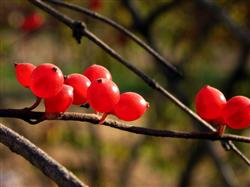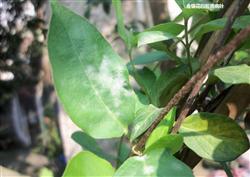Honeysuckle planting techniques: how to reproduce honeysuckle?

How do honeysuckle reproduce? What are the breeding methods of honeysuckle? Also ask friends to help introduce the propagation methods of honeysuckle mainly include seed propagation, cutting propagation and striping propagation, the following three propagation methods are introduced in detail for your reference. Propagation method 1. Seed propagation: from August to October, fully ripe fruits were collected from plants or branches with strong growth and free of diseases and insect pests. After harvest, the fruits were scrubbed, the peel and pulp were bleached with water, and the impurities were removed after drying. The pure seeds were accumulated at the temperature of 0: 5 ℃ and sowed in March-April of the following year. Before sowing, soak the seeds in 25-35 ℃ warm water for 24 hours, then mix them with wet sand at room temperature to accelerate germination. When 30-40% of the seeds are cracked, they can be sown. It is appropriate to sow seeds with 1.00 grams per square meter. Propagation method 2. Cutting propagation: cutting method can effectively propagate honeysuckle. Cutting can be carried out in spring, summer and autumn, and the survival rate of cutting is the highest in rainy season. When cutting, take 1-year-old strong branches (or flowering branches) as cuttings, leave 3 or 4 pairs of buds (or leaves) on each cuttage, remove the lower leaves and cut them in the seedbed. NAA can also be used as rooting agent to promote rooting of cuttings. Attention should be paid to spraying water frequently after cutting, and it can take root 2-3 weeks after cutting. Spring seedlings can be transplanted in autumn, and summer and autumn seedlings can be transplanted in the following spring. Third, striping propagation: from June to October, take the branches after flowering with nutrient-rich wet mud at the bottom, press them on 2-3 nodes with the above-mentioned fat mud, cover them with some grass to moisturize, and grow adventitious roots at the nodes after 2-3 months, then cut off the branches at 1 cm behind the node of the adventitious roots, let them separate from the mother plant and grow independently, and plant them later. Click to get more honeysuckle planting technology click to get more medicinal material planting technology
- Prev

Honeysuckle planting technique: what is honeysuckle powdery mildew?
What is honeysuckle powdery mildew? What harm does powdery mildew do to honeysuckle? Netizens are also asked to help introduce the harm of powdery mildew to honeysuckle: powdery mildew mainly harms leaves and sometimes stems and flowers. The disease spot on the leaf is a small white spot at first, then expands into a white powdery spot, and the whole leaf is covered with powdery layer in the later stage.
- Next

Planting technique of Pinellia ternata: what about tuber rot of Pinellia ternata?
How does Pinellia tuber rot disease do? What method can effectively control tuber rot of Pinellia ternata? Hope that friends can help guide the occurrence of tuber rot in Pinellia ternata. The following land network summarizes the harm and control methods of tuber rot in Pinellia ternata for netizens' reference. Pinellia tuber.
Related
- Fuxing push coffee new agricultural production and marketing class: lack of small-scale processing plants
- Jujube rice field leisure farm deep ploughing Yilan for five years to create a space for organic food and play
- Nongyu Farm-A trial of organic papaya for brave women with advanced technology
- Four points for attention in the prevention and control of diseases and insect pests of edible fungi
- How to add nutrient solution to Edible Fungi
- Is there any good way to control edible fungus mites?
- Open Inoculation Technology of Edible Fungi
- Is there any clever way to use fertilizer for edible fungus in winter?
- What agents are used to kill the pathogens of edible fungi in the mushroom shed?
- Rapid drying of Edible Fungi

